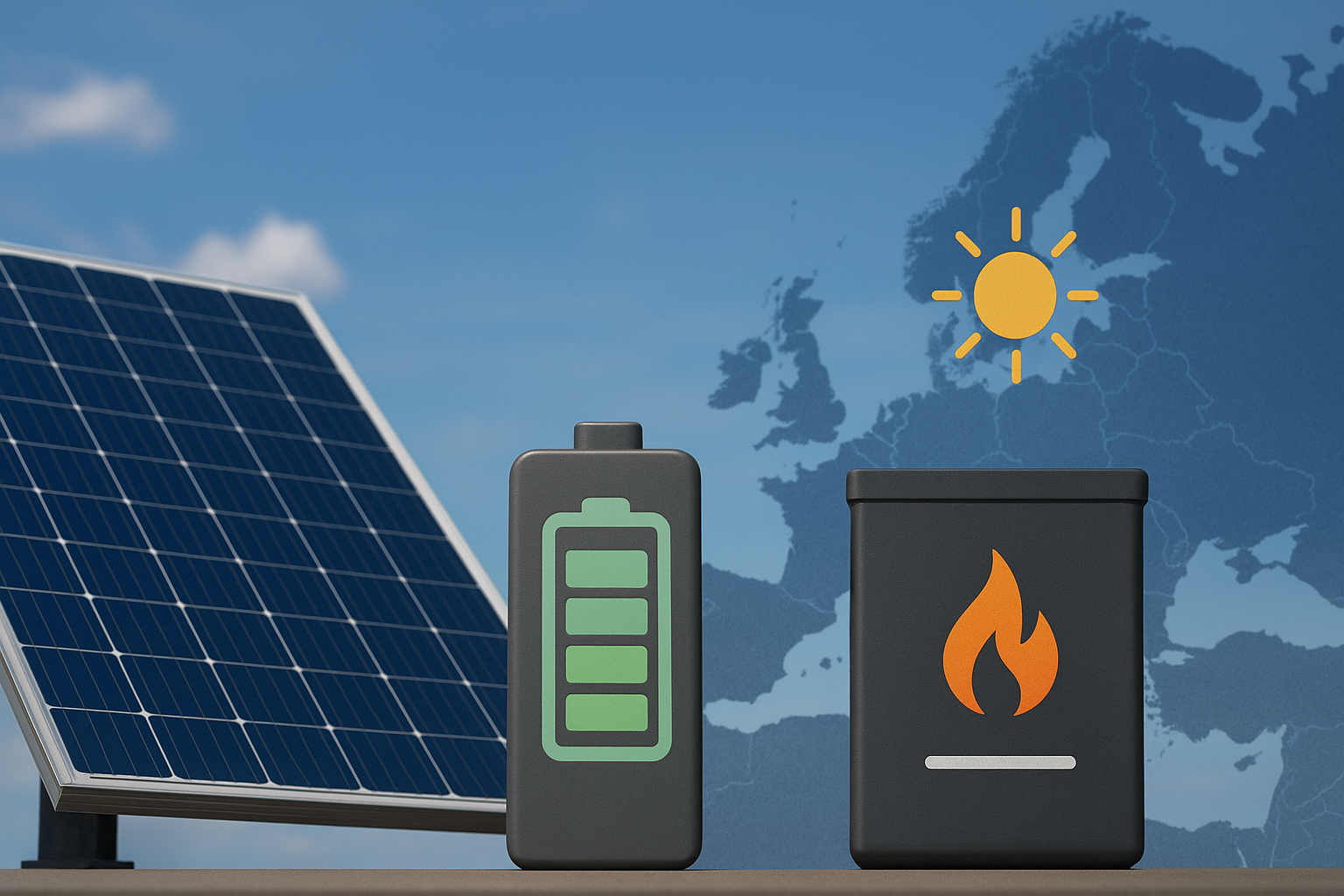The electricity system is undergoing a rapid transformation. With more renewables entering the grid, flexibility has become just as valuable as generation itself. Balancing markets are at the center of this change, offering new revenue opportunities for batteries, solar operators, and flexible assets such as WKK.
This article provides an overview of the European balancing framework, its history, and the main products available — including FCR, aFRR, mFRR, and imbalance settlement. It also explains how initiatives like PICASSO and MARI are shaping the future of flexibility and what this means for Dutch businesses.
Historical Context
Traditionally, balancing services were delivered by large conventional power plants. They could adjust their output up or down to match demand. With the rise of intermittent renewables like wind and solar, these services became scarcer — just as they became more necessary.
In response, transmission system operators (TSOs) like TenneT in the Netherlands and ENTSO-E at the European level have restructured balancing markets to open participation to new technologies, including batteries, aggregators, and distributed energy resources.
Key Market Platforms: ENTSO-E, EPEX, PICASSO, and MARI
To understand how balancing works, it helps to know the main platforms that organize these markets:
• ENTSO-E is the European network of transmission system operators. It sets common rules and ensures that balancing markets across different countries are aligned and can work together.
• EPEX Spot is the trading exchange where electricity is bought and sold day-ahead and intraday. By trading on EPEX, market players can already minimize their imbalances before they reach real time.
• PICASSO is a European project focused on integrating the aFRR market. Thanks to PICASSO, a flexible asset in the Netherlands can be activated to help balance the grid in Germany, Belgium, or elsewhere. This creates a much larger and more liquid market.
• MARI is the sister project for mFRR, aiming to harmonize manual balancing across Europe.
Together, these initiatives are breaking down national silos and creating one bigger European marketplace for flexibility — which means more opportunities for batteries, WKK, and other flexible assets.
The Main Products
Balancing markets are built around a set of products. Each product has its own purpose, timescale, and technical requirements:
• Frequency Containment Reserve (FCR): The first line of defense when frequency drifts away from 50 Hz. Activation happens automatically within seconds (up to 30), and the service must be sustained for at least 15 minutes. Batteries are an excellent fit because they can respond instantly.
• Automatic Frequency Restoration Reserve (aFRR): Used to bring frequency back to its nominal value and to coordinate balancing between countries. Assets receive an automatic control signal from the TSO and must deliver full power within 5 minutes. Activations usually last 5–15 minutes but can be longer. Real-time communication and guaranteed availability are essential.
• Manual Frequency Restoration Reserve (mFRR): Handles larger imbalances on a slower timescale. Here the TSO manually calls on assets, with a typical activation time of about 12.5 minutes in the Netherlands. Activations can last from a quarter of an hour up to several hours. CHP/WKK units and flexible demand are often used in this market.
• Imbalance Settlement: Every market participant must keep their portfolio balanced. Deviations are settled against imbalance prices — which can mean penalties if you worsen the imbalance, or extra revenues if your position helps the system.
How Payments Work
Revenues in balancing markets come from three main sources:
• Capacity payments or simply being available with a certain amount of MW.
• Activation payments for the actual energy delivered during a dispatch.
• Imbalance advantage, where smart positioning in day-ahead and intraday trading lets you benefit from imbalance price differences.
What’s Needed to Participate
Not every asset can just join the balancing market. Participants must meet several requirements:
• A real-time telemetry link with TenneT.
• Passing performance tests to prove activation speed and reliability.
• For smaller players: working with an aggregator who pools assets together.
• Proper licenses and registrations with EPEX and TenneT.
Role of Batteries, Solar, and WKK
• Batteries are the natural fit for FCR and aFRR because of their instant response, modular size, and precise controllability.
• Solar PV cannot directly participate in balancing, but when combined with batteries, surplus generation can be shifted into these markets.
• WKK/CHP units are well suited for mFRR, and when paired with batteries, they can also gain access to aFRR.
Looking Ahead
By 2030, TenneT expects Dutch flexible capacity to grow from just 11 GW in 2022 to nearly 26 GW. Batteries alone are forecast to reach 5 GW standalone and 1 GW co-located. With Europe-wide integration through PICASSO and MARI, Dutch businesses that invest in flexibility today will have access to increasingly liquid and lucrative markets.
Enerflux Perspective
At Enerflux, we believe that participation in balancing markets should not be seen as an optional extra, but as a core revenue stream for greenhouses, industrial sites, and other large energy users. By combining Solar, WKK, and Battery systems, we deliver turnkey solutions that unlock these opportunities while ensuring compliance with TenneT and ENTSO-E requirements.
From feasibility studies and subsidy guidance to installation, integration, and long-term operation, we help businesses navigate the complexity of balancing markets — and turn volatility into profit.

